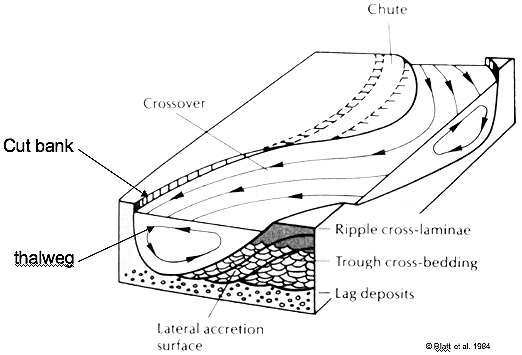The thalweg line is a concept of river law, defined under customary law either as “the mid-line of the main navigation channel” or as the deepest water line. The purpose of the thalweg line in matters of delimitation is to ensure an equal share of the navigable channel between two sovereign States taking into account the navigation interests. As compared to the median-line, the thalweg line as single rule was less used for maritime delimitation in State practice; one example is the Alaska Boundary Arbitration between Great Britain and the United States in 1903.
However, this delimitation method becomes a subject of interest under customary law where it is sometimes combined with the median-line in order to achieve an equitable result in matters of delimitation. This is illustrated in the Treaty between Great Britain and the USA adopted on 15 June 1846, which settled that the Oregon boundary passed “through the middle of [the channel which separates the continent from Vancouver’s Island, i.e. the thalweg line] and of Fuca’s Strait, to the Pacific Ocean [the median line]”. Several other delimitation agreements adopted the combined rule of the median/thalweg line, in particular in the early 20th century. It is the case for the 1912 Declaration between France and Germany pursuant to the boundary delimitation between the French colonies of Dahomey and the Sudan, and the German possessions of Togo, which used the thalweg line from one point of the river boundary up to the a point in the lagoon combined with a median line for the rest of the frontier.
The combined rule of median/thalweg line under customary law of maritime delimitation is worth analyzing because it laid down the basic fundamentals of the Equidistance/Special Circumstances principle, which, shares some similarities with the Equidistance/Relevant Circumstances concept. Under customary law, the median line was widely adopted insofar as it was able to provide an equal share of overlapping river or sea frontiers between two sovereign States. However, due to the peculiarities of the coastal geography and other interests related to navigation or historic rights, it was already admitted under customary law that a rigid application of the median line could not ensure an equitable delimitation. Consequently, the combined rule median/thalweg line was, at that time, perceived where necessary as a solution to overcome those difficulties. These delimitation principles mainly based on the median line, the thalweg and the median/thalweg line were constantly, sometimes in other forms, referred to during the codification process of the customary international law of maritime delimitation.

